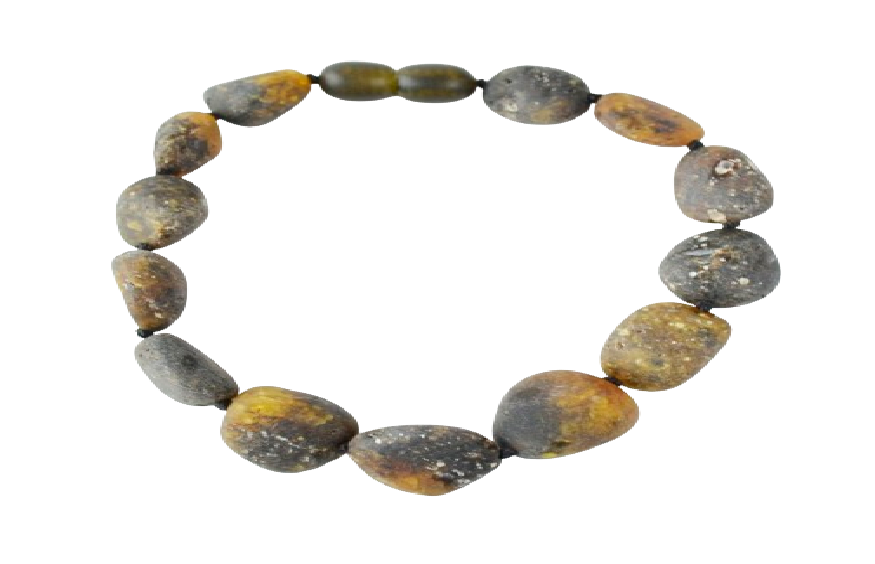Amber has been cherished for thousands of years, not only for its warm, golden hues but also for its historical, cultural, and even medicinal significance. With its origin in fossilized tree resin, amber comes in various forms, depending on the region it was formed. Among all types, Baltic amber is regarded as the finest. But what sets it apart from amber found in other parts of the world? Let’s explore why Baltic amber, particularly when crafted into jewelry like bracelets, is considered superior.
What Is Baltic Amber?
Baltic amber originates from the resin of ancient coniferous trees in the Baltic Sea region, which includes countries like Lithuania, Latvia, Estonia, Poland, and parts of Russia. This resin, produced around 44 million years ago, has fossilized over time, creating the amber we admire today. Baltic amber is known for its rich colors, ranging from honey yellow to deep brown, and its incredible clarity, often containing prehistoric inclusions like insects, plant matter, or bubbles, making each piece a unique window into ancient forests.
The Unique Composition of Baltic Amber
One of the main factors that make Baltic amber stand out is its composition. Baltic amber contains the highest concentration of succinic acid, a natural substance that has potential health benefits. While other types of amber also contain succinic acid, none match the levels found in Baltic amber, which boasts around 8% succinic acid content. This composition contributes to the stone’s reputation for its healing properties, making it a popular material for jewelry, especially bracelets and necklaces worn for therapeutic purposes.
Baltic Amber’s Succinic Acid: The Key to Its Superiority
Succinic acid is a powerful antioxidant that has been researched for its anti-inflammatory, analgesic, and immune-boosting properties. When Baltic amber jewelry, such as a Baltic amber bracelet, is worn against the skin, body heat helps release small amounts of succinic acid, which can then be absorbed into the body. This natural release process is believed to help alleviate pain, reduce inflammation, and promote overall wellness. This is one reason why Baltic amber bracelet have gained popularity, particularly among parents seeking natural remedies for their babies’ teething discomfort.
Other Types of Amber: How Do They Compare?
Amber is found in various regions across the world, including the Dominican Republic, Myanmar (Burmese amber), Mexico, and even parts of the United States. Each type of amber has its own unique characteristics, but they differ in terms of age, composition, color, and clarity. Here’s a closer look at some of the more common types of amber and how they compare to Baltic amber:
1. Dominican Amber
Dominican amber is well-known for its rich variety of colors, including rare blue amber. It is younger than Baltic amber, formed around 15-20 million years ago. While it often has stunning clarity and vivid colors, Dominican amber contains a lower concentration of succinic acid compared to Baltic amber. This means that, while Dominican amber is beautiful, it may not offer the same level of potential therapeutic benefits as Baltic amber.
2. Burmese Amber (Myanmar Amber)
Burmese amber, also known as Burmite, is one of the oldest types of amber, estimated to be around 100 million years old. It is known for its deep, reddish-brown color and often contains fascinating inclusions of ancient life forms. However, Burmese amber generally has a lower succinic acid content than Baltic amber, making it less favored for jewelry with purported healing properties. Its rarity and age, though, make it highly valued among collectors and scientists.
3. Mexican Amber
Mexican amber is typically found in the Chiapas region and is around 25 million years old. It often exhibits a beautiful range of colors, from yellow to deep orange, and sometimes even green. Like Dominican amber, Mexican amber has a lower succinic acid content compared to Baltic amber, which limits its appeal as a therapeutic stone. Nonetheless, its vibrant colors make it a popular choice for jewelry enthusiasts.
4. Copal Resin
Often mistaken for amber, copal is actually a younger resin that has not fully fossilized. It is found in various regions, including Africa and South America. While copal can be polished to look similar to amber, it is much softer and more prone to damage. Additionally, copal lacks the high succinic acid content found in Baltic amber, making it a less desirable option for those seeking the purported health benefits associated with amber jewelry.
Why Baltic Amber Reigns Supreme
Baltic amber surpasses other types of amber in several ways, contributing to its reputation as the finest amber in the world:
1. High Succinic Acid Content
The most significant factor in Baltic amber’s superiority is its high succinic acid content. This makes it not just a beautiful gemstone, but also a potential natural remedy. People wear Baltic amber bracelets, necklaces, and other forms of jewelry to help relieve pain, reduce inflammation, and boost overall wellness. While scientific research on amber’s healing properties is ongoing, many users swear by its benefits, especially for soothing babies’ teething pain.
2. Rich Variety of Colors and Inclusions
Baltic amber comes in a wide range of colors, from pale yellows to deep browns and even rare greens. Its inclusions, which often consist of ancient plant material, insects, or air bubbles, make each piece truly unique. This characteristic, combined with its stunning natural glow, makes Baltic amber highly sought-after for jewelry making.
3. Durability and Quality
Baltic amber is harder and more durable than many other types of amber, thanks to its longer fossilization process. This makes it ideal for crafting into jewelry, particularly bracelets and necklaces that need to withstand regular wear. Baltic amber’s durability ensures that it retains its beauty and integrity over time, further enhancing its value.
4. Cultural and Historical Significance
Baltic amber has been cherished for thousands of years, with a rich history in European cultures. Known as the “Gold of the North,” it has been used in trade, medicine, and adornment since ancient times. This historical and cultural value adds to its allure, making Baltic amber not just a gemstone, but a piece of living history.
Baltic Amber Bracelets: Beauty with Benefits
Baltic amber bracelets are among the most popular forms of amber jewelry. Not only do they showcase the gem’s natural beauty, but they also offer the wearer a convenient way to enjoy the potential health benefits of Baltic amber. By wearing the bracelet on the skin, the body’s warmth helps to release the succinic acid, potentially providing relief from pain and inflammation. Whether worn for style or wellness, Baltic amber bracelet have a timeless appeal.
Baltic amber stands out as the finest type of amber in the world due to its high succinic acid content, diverse color range, and unique inclusions. While other types of amber, such as Dominican, Burmese, and Mexican amber, have their own beauty and characteristics, none match the therapeutic reputation and historical significance of Baltic amber. Its use in jewelry, particularly in bracelets, allows people to experience both its aesthetic and potential health benefits, cementing its status as a gemstone like no other.

